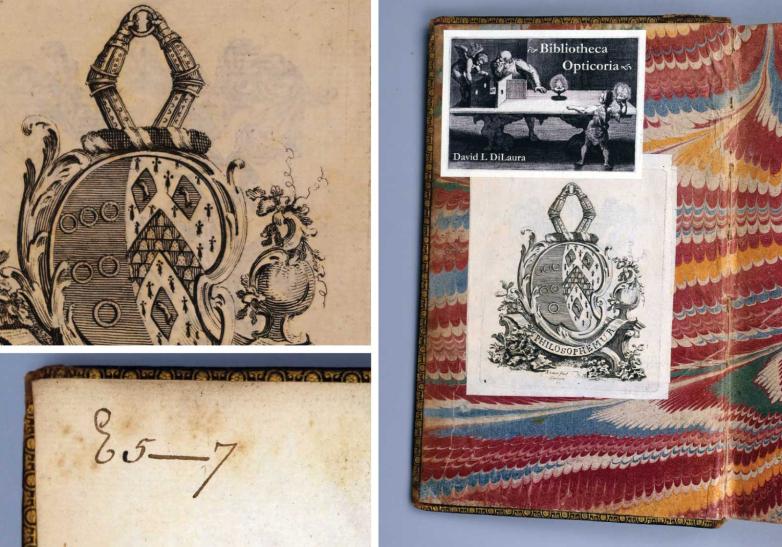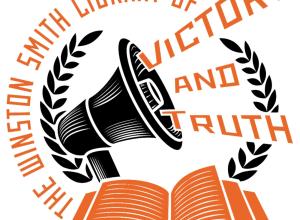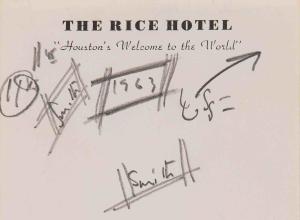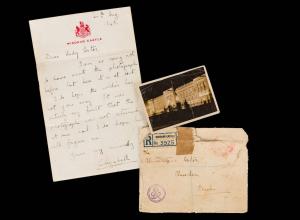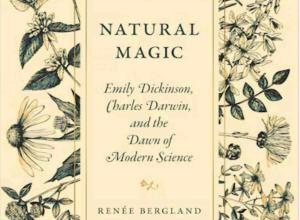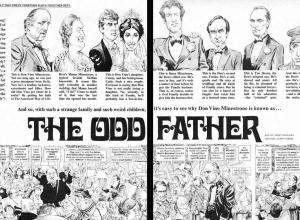While not a guarantee, “The presence of both the Musgrave and Huggins bookplates is generally accepted as proof that a book previously belonged to Isaac Newton,” according to the special collections and archives at Cardiff University in Wales, which found Newton-owned volumes in their collection the same way, one in 2012 and another in 2018. The books identified by de Villamil ultimately went to Trinity College, Cambridge, in 1943, but the ones the Musgrave family had sold earlier had been scattered, some ending up in Cardiff, and one, at least, in Colorado.
“I’ve never been so taken aback by anything in my life,” DiLaura recalled of his initial realization that he possessed one of those long-lost Newtons. He’s been collecting antiquarian books for about thirty years and has long preferred, as he calls them, “grubby” books that have been used by their readers, and second editions, which are “often more important” when you think of the book as “an instrument rather than as an object.”
He ordered this particular book from a catalogue about twenty years ago from English bookseller Chris Adam Smith, he said, both buyer and seller unaware of its very special origins. Even more amazing, this book isn’t just a random volume from the famous physicist’s dispersed library—it is a presentation copy of his own book, bound in red morocco with gilt ruling and tooling, which Newton had perhaps earmarked for someone, but never got around to sending.
For a second opinion on the book’s provenance, DiLaura reached out to Scott Mandelbrote, director of studies in history and Perne librarian at the University of Cambridge and editorial director of the Newton Project, who confirmed the find. Mandelbrote later said that DiLaura had “struck the jackpot in collecting terms.”
Mandelbrote further explained, “Books from Newton’s library turn up fairly regularly, and several hundred books thought to have been in Newton’s library (that is, known to have belonged to him from post-mortem catalogues) have yet to be located. But Newton’s copies of his own books have not normally appeared on the market since the 1940s and are mostly accounted for in libraries, principally at the Cambridge University Library and the library of Trinity College, Cambridge, but also at McGill and elsewhere.” One recent exception, he pointed out, was a presentation copy of Newton’s first edition of Opticks, given to Swiss mathematician Nicolas Fatio de Duillier, that turned up at Forum Auctions in 2020. It sold for £193,750 ($260,000).
In that case, the association between two contemporaries was an added bonus. DiLaura reported that his book lacks “a single mark” on its pages; it was theoretically kept pristine so that Newton could give it away. Newton had another second edition of Opticks in his library, a working copy he annotated and edited while preparing the third edition, and that copy is at the Huntington Library.
DiLaura’s copy is the crown jewel of his collection. In an email to colleagues, he described the joy and surprise of uncovering its significance as “a once-in-a-collector’s-lifetime event, a lesson about what one might discover from careful bibliographic study, and a cautionary tale of how easy it is to overlook important things.”
The bibliographical project that occasioned his discovery has just been published, as well. Bibliotheca Opticoria 1475–1925: A Library of the History of Our Understanding of Light and Vision provides comprehensive descriptions for every important volume on the theory, practice, and application of optics, plus a note on his collecting experiences.
“I’ve always been conscious of the power of the book and its role in human progress,” DiLaura said. “That’s the basis on which I’ve been collecting books.”





